1. Introduction
Nanostructured transition metal oxides (TMOs) are now considered as the indisputable prerequisite for developing various novel functional and smart materials. TMOs are compounds composed of oxygen atoms bound to transition metals. Copper (II) oxide (CuO) is one of the important TMOs, which plays a significant role in modern solid-state technology due to its wide range of applications such as solar cells, gas sensors, antimicrobial applications, etc.[1-4]. The benefits of using CuO in scientific and engineering applications contain its lower cost, non-toxic nature and simplicity of manufacturing. In the past few years, nanostructures of CuO with band gaps between 1.5 and 3.0 eV have been examined because of their exclusive photoluminescence and photo electro-chemical properties[1-6]. Several techniques have been employed for the fabrication of CuO thin film, such as spin-coating[7], thermal evaporation[8], pulsed laser deposition[9], chemical vapor deposition[10], molecular beam epitaxy[11], spray pyrolysis[12], etc. Among various deposition techniques, spray pyrolysis is a straightforward and cost-effective one[12]. Spray pyrolysis is a noble technique to synthesize a wide variety of good quality chemically homogeneous thin films. Large quantities of oxide thin films with homogeneous particle sizes and crystalline sizes of less than 100 nanometers may be produced by this method. The structure of CuO thin film can be influenced by doping transition metals like Zn, Mn, Co, etc.[13-15]. The ionic radius of Mn2+ is 0.83 Å, and Cu2+ is 0.73 Å[16]; because of their nearly equivalent ionic radius, it is easily possible to replace Cu2+ with Mn2+. Again, Mn2+ acts as a donor, so it can produce a free electron and enhance the electrical conductivity of CuO. Mn doping is also beneficial for tuning the optical band gap. Ferromagnetic and structural properties of radiofrequency magnetron sputtering deposited Mn-doped CuO thin films were studied by Zhao et al.[17]. They reported that the ferromagnetic behavior in Mn-doped CuO appearing from the super-exchange interactions of Mn–O–Cu–O–Mn coupling in the [10
2. Experimental details
CuO and Mn:CuO thin films were deposited onto glass substrates using the spray pyrolysis technique. The glass substrates were cleaned in an ultrasonic bath using acetone, ethanol and deionized water and dried in a clean atmosphere. Copper (II) acetate monohydrate [C4H6CuO4·H2O] (purity 99%, MERCK, KGaA, 64271 Darmstadt, Germany) was used as a precursor for the deposition of CuO thin films because of its non-toxicity, non-flammable nature and water-soluble. To prepare Mn:CuO thin films, manganese acetate [Mn(CH3COO)2] (purity 99%, MERCK, KGaA, 64271 Darmstadt, Germany) was used as a doping material. At first, 0.1 M C4H6CuO4·H2O was dissolved into 100 mL distilled water and ethanol. The ratio of water and ethanol was 9 : 1. Then the mixture of materials was stirred at room temperature (300 K) for 30 min to get a homogeneous solution. To prepare the solution for deposition of Mn:CuO thin films with 2, 4, 6 and 8 atomic percentages (at%) of Mn concentrations, the ratio of the amounts of C4H6CuO4·H2O and Mn(CH3COO)2 were varied accordingly. The deposition conditions are exhibited in Table 1.
| Parameter | Condition |
| Spray rate during deposition | 1.00 mL/min |
| Substrate temperature | 350 °C |
| Deposition time | 10 min |
| Nozzle-to-substrate distance | 25 cm |
| Carrier air pressure | 0.50 bar |
Film thickness was measured using the multiple beam interferometric technique (Fizeau fringe method)[23]. The thickness of 0, 2, 4, 6 and 8 at% Mn:CuO thin films were found 208, 215, 220, 232 and 238 nm, respectively. The crystal structure of CuO and Mn:CuO thin films were examined by an X-ray diffractometer [PANalytical EMPYREAN SERIES 2, Netherlands] with CuKα radiation (1.5406 Å from CuKα target operated at an input power of 60 kV). The interplanar distance was calculated using Bragg’s equation, and the peak positions were matched with the JCPDS data card no. 96-901-5925 and 96-900-5770. Field emission scanning electron microscopic (FESEM) images of the deposited samples were captured at 30 000 magnifications with a JEOL JSM-7600F (Japan) field emission scanning electron microscope. Chemical composition analysis has been carried out by an electron dispersive spectrometer (JEOL EX-37001, Japan) attached to the FESEM. Optical properties were studied at room temperature (300 K) using a UV–vis spectrophotometer (Optizen Pop, Korea). The electrical properties of the films were measured using the four-point probe method at 300 K temperature. Hall effect measurements of CuO and Mn:CuO thin films were performed at 300 K using a Hall effect measuring apparatus (ECOPIA HMS-5000, USA). The Hall effect measurements were done applying the magnetic field 0.54 T and current 3 mA.
3. Results and discussion
3.1 Surface morphology
Fig. 1 represents the FESEM images of CuO thin films with various Mn concentrations (conc.). Irregular-shaped CuO nanoparticles are seen on the surface of CuO thin films, which intends to form the different shapes of clusters. The size of CuO nanoparticles get more uniform, and the gap lessened at 2 at% Mn:CuO thin films. This may be due to the substitutions of Cu2+ ions by relatively larger sized Mn2+ ions in the CuO lattice, as a result of which molecular disorder and lattice strain are introduced and the gaps between the particles decrease[24]. Semi-spongy porous and spherical agglomerated nanocrystallites are seen on the surface of 4 at% Mn:CuO thin film. This may happen due to the origination of some secondary crystalline phases with the increased Mn2+ content. Such a semi-spongy porous microstructure may act nicely as a traping center for gas and hence be suitable for gas-sensing applications. In the FESEM image of 6 at% Mn:CuO thin film, more prominent spherical nanocrystallites are observed. It is possibly due to the relative adjustments between the primary and secondary crystalline phases upon incrementing the amount of Mn2+ between 4 to 6 at%. For 8 at% Mn doping, the surface seems to comprise non-uniformly distributed melted nanoparticle clusters, which may appear because of the excess amount of Mn2+ beyond the solid solubility limit of the dopant in the CuO lattice[13]. The formation of spherical-shaped nanoparticle clusters was found in spray pyrolysis-deposited transition metal-doped CuO thin films, such as Zn-doped CuO[13] and Cd-doped CuO[25] thin films and in spin-coated Mn:CuO thin films[26].
3.2 Chemical composition
Fig. 2 shows the EDX spectra of 0, 2, 4, 6 and 8 at% Mn:CuO thin films. Fig. 2(a) confirmed the presence of O and Cu elements, and Figs. 2(b)–2(e) verified the existence of Mn in the Mn:CuO thin films.
Table 2 shows the quantitative data from EDX analysis of CuO and Mn:CuO thin films. The instrumentation error corresponding to O, Cu and Mn are represented by σO, σCu and σMn in Table 1. σO, σCu and σMn values are less than 0.50, which indicates reasonable accuracy of EDX analysis.
| Mn conc. in CuO (at%) | at.% of element in EDX report | Mn/Cu ratio | |||||
| O | σO | Cu | σCu | Mn | σMn | ||
| 0 | 40.81 | 0.18 | 58.19 | 0.48 | – | – | 0 |
| 2 | 66.36 | 0.38 | 33.42 | 0.45 | 0.21 | 0.33 | 0.006 |
| 4 | 75.68 | 0.44 | 23.20 | 0.43 | 1.12 | 0.42 | 0.048 |
| 6 | 60.82 | 0.33 | 35.55 | 0.44 | 3.63 | 0.42 | 0.102 |
| 8 | 54.58 | 0.20 | 41.26 | 0.41 | 4.17 | 0.39 | 0.101 |
Table 2 shows that with the increase of Mn concentration of 2, 4, 6 and 8 at% Mn:CuO thin films, the amount of Mn increases significantly in the deposited films. This is evidence of successful incorporations of Mn in CuO lattice. However, the amount of Mn in EDX analysis of Mn:CuO thin films are less than those of the expected amount of Mn in deposited films. It is revealed from the observed data that the atomic percentage (at%) of Cu decreases with the increase of Mn (conc.) in CuO. This may happen because Cu has been successfully replaced by its Mn counterpart as a dopant. The ratio of Mn to Cu (in at% units) increases with the Mn (conc.) accordingly. But for 8 at% Mn doping, it is observed that the Mn/Cu ratio is slightly decreased for 6 at% Mn doping. It may be attributed to the effect of an excess amount of Mn beyond the solid solubility limit of Mn in CuO lattice, as discussed in the surface morphology analysis.
3.3 Structural properties
Fig. 3 shows the XRD patterns of the as-deposited CuO and Mn:CuO thin films. X-ray diffraction (XRD) patterns show that CuO and Mn:CuO thin films were grown on the glass substrate polycrystalline nature. It is seen that all the XRD peaks match with the monoclinic CuO or tenorite phase (JCPDS card No 96-901-5 925). The crystallographic orientations of CuO thin film are detected along the (110), (
The peak positions, detected planes, crystallite sizes, average crystallite sizes, strain and dislocation densities are listed in Table 2. The Scherrer equation[28] was used to evaluate the crystallite size of CuO and Mn:CuO thin films from Fig. 3. The Scherrer equation is given as follows:
| D=Kλβcosθ, | (1) |
where D is the crystallite size, λ = 1.5406 Å is the wavelength of Cu-Kα
Strain is another crucial structural parameter that varies depending upon the film growth conditions. It is calculated using Eq. (2)[29], where ε is the strain,
| ε=βcosθ4. | (2) |
Strain is found to decrease as Mn conc. increases (Table 2). This reduction in strain may be due to the improvement of crystallinity at higher Mn conc. up to 6 at% and changes in surface morphology. From SEM images, it can be seen that the surface is highly compact and dense for CuO and 2, 4 and 6 at% Mn:CuO thin films. For 8 at% Mn:CuO thin film, it can be seen from SEM images that the surface comprised non-uniformly distributed melted nanoparticle clusters which cause even more reduction in strain.
Crystallite size and lattice strain were also calculated from the Williamson-Hall (W-H) plot (Fig. 4) based on the equation of uniform deformation model represented by Eq. (3)[30].
| βcosθ=KλD+4ϵsinθ. | (3) |
The W-H plots of Mn:CuO thin films with various Mn concentrations are shown in Fig. 4. The y-intercepts of the slope were used for the determination of crystallite size DW-H. Slopes of the W-H plots represent the strain values (εW-H). DW-H of 0, 2, 4, 6 and 8 at% Mn:CuO thin films are estimated to be 18, 20, 21, 26 and 28 nm, respectively. DW-H is found almost comparable with Davg in Table 2. εW-H of 0, 2, 4, 6 and 8 at% Mn:CuO thin films are computed as 5.86, 4.94, 3.88, 1.16 and 1.03 × 10–3, respectively. The sign of εW-H is found positive in W-H plots of Mn:CuO thin films, so the nature of strain is tensile in the films. Here, tensile strain in CuO thin film decreases with the increment of Mn doping.
The dislocation density is also an important structural parameter that determines the quality of the crystal[26]. Dislocation density can be calculated using Eq. (4)[31].
| δ=1D2. | (4) |
Dislocation density decreases when Mn conc. increases in CuO thin films (Table 3). Because of the nearly equivalent ionic radius of Mn2+ and Cu2+, it is possible to achieve substitutional defects via Mn doping. But due to substitutional defects, Mn–O bonds appear in the films, and due to the replacements of Cu–O bonds, subsequent changes cause a reduction in dislocation density, strain, etc. The trend of variation of strain and dislocation density with Mn conc. is the opposite that of crystallite size.
| Mn conc. (at.%) | 2θ (deg) | (hkl) | D (nm) | Davg (nm) | ε (10–3) | δ (10–3) |
| 0 | 36.3809 | ($ {\overline 1} $ 11) | 18.80 | 17.60 | 1.60 | 3.20 |
| 39.6309 | (200) | 16.30 | ||||
| 2 | 36.5833 | ($ {\overline 1} $ 11) | 18.80 | 17.50 | 1.61 | 3.30 |
| 39.8928 | (200) | 16.20 | ||||
| 4 | 36.7023 | ($ {\overline 1} $ 11) | 22.60 | 18.50 | 1.50 | 2.90 |
| 39.9642 | (200) | 14.30 | ||||
| 6 | 36.7024 | ($ {\overline 1} $ 11) | 22.60 | 19.50 | 1.41 | 2.60 |
| 39.8333 | (200) | 16.30 | ||||
| 8 | 36.6429 | (${\overline 1}$ 11) | 28.20 | 21.30 | 1.32 | 2.40 |
| 39.8095 | (200) | 14.30 |
3.4 Optical properties
Fig. 5 shows the absorbance spectra of the deposited CuO and Mn:CuO thin films. CuO thin film exhibits the highest absorbance in the Vis–NIR region. Absorbance decreases in 2 at% Mn:CuO thin film. Although not much significant changes are observed in the crystallinity and surface morphology of CuO thin films upon 2 at% Mn doping, the reduction in absorption suggests the successful substitution of Cu2+ by Mn2+ ions. It may be said that substitutions caused by 2 at% Mn doping maintains the growth trend of CuO crystal lattice and help to form uniform-shaped nanoparticles as found in XRD and FESEM analyses. Absorbance in the Vis-NIR region increases with Mn conc. in the range of 4 to 8 at% in CuO thin films. This increment may be ascribed to the appearance of CuO–Cu2O mixed phases in the film. The manner of variation of absorbance in Mn:CuO thin film matches nicely with that found in earlier literature[21].
The theories of optical absorption give the relation between absorption coefficient (α) and photon energy (hν) as given below[32].
| αhν=A(hν−Eg)n, | (5) |
where A is a constant, Eg is the bandgap energy of the semiconductor material, and exponent n depends on the type of transition, for allowed direct transition n = 1/2 and for allowed indirect transition n = 2[32]. The optical band gap energies related to allowed direct and indirect transitions were evaluated using the (αhν)2 versus hν graphs (Tauc plots) shown in Figs. 6 and 7, respectively.
It is seen in Fig. 6 that CuO thin film has the lowest direct optical band gap of Egd ~ 2.67 eV among all the films. Egd increases between 2.71 and 2.90 eV with Mn doping up to 4 at%, and decreasing for 6 and 8 at% Mn doping. It can be explained from the XRD patterns of the films in Fig. 3. It is seen that 4, 6, and 8 at% of Mn concentrations secondary mixed-phase Cu2O (cubic phase) appears in the XRD pattern. The reason for the increase in Egd upon 4, 6 and 8 at% Mn doping may be the increase of predominance of Cu2O-cubic phase in the films. The indirect optical band gaps (Egi) of CuO and Mn:CuO thin films are estimated using Fig. 7. CuO thin film has the lowest Egi of 0.11 eV among all, whereas the highest Egi is 1.73 eV found for 2 at% Mn:CuO thin film. Egi gradually decreases with Mn concentrations from 4 to 8 at%. It can be said that the increase of dominance of the Cu2O-phase in the films causes the decreases of Egi and subsequent rise in Egd. Since the direct band gap value of the Cu2O-phase ranges between 2.20 to 2.90 eV[33, 34], which is higher compared to that of the CuO-phase, the dominance of the Cu2O-phase is observed here. Tuning of the band via mixed phases of copper oxide was reported in a published paper[33, 34]. Optical band values found for CuO and Mn:CuO are almost in agreement with those reported in earlier articles[21, 22].
The refractive index of the thin films was determined according to the Moss relation[35], which is directly associated with the fundamental energy band gap,
| n=(95Eg)14eV. | (6) |
Another relevance between the band gap energy and the refractive index was introduced by Herve and Vandamme in the following equation[36],
| n=√1+(AEg+B)2, | (7) |
where A is the hydrogen ionization energy ~13.6 eV, and B is 3.47 eV.
Another relevance between the band gap energy and the refractive index was introduced by Ravindra, and Guptau relation is in the following equation[37],
| n=4.084−0.62Eg. | (8) |
The variation of refractive index (n) as a function of Mn concentration of the CuO thin films was also shown in Table 3 for these three models. In Table 4, it is seen that for n (Moss) and n (R-G) decreases for 0 to 4 at% Mn concentrations and then increases for 4 to 8 at% Mn concentrations and for n (H-V) follows the opposite trend. This phenomenon can be explained by the trend of variation of Egd of CuO and Mn:CuO thin films. Because Egd of CuO and Mn:CuO thin films increases with Mn doping between 0 and 4 at% and then decreases for 4 to 8 at% Mn concentrations. So, it may be remarked that the refractive index of the materials strongly depends on the band gap energy. Fig. 8 shows the variation of the refractive indices of Mn:CuO thin films with various Mn content. Refractive indices found in this work match nicely with the values reported for CuO[38, 39].
| Mn Conc. (at%) | n (Moss) | n (H-V) | n (R-G) | ε∞ (Moss) | ε∞ (H-V) | ε∞ (R-G) | ε∞ (M-R) | εo | $\dfrac{ { {m} }_{ {\rm e} }^{ {*} } }{ { {m} }_{ {\rm o} } }$ |
| 0 | 2.44 | 2.75 | 2.43 | 5.96 | 7.59 | 5.90 | 7.47 | 10.30 | 0.18 |
| 2 | 2.43 | 2.76 | 2.40 | 5.92 | 7.62 | 5.78 | 5.84 | 10.17 | 0.17 |
| 4 | 2.39 | 2.80 | 2.29 | 5.72 | 7.82 | 5.22 | 5.69 | 9.59 | 0.04 |
| 6 | 2.41 | 2.78 | 2.35 | 5.82 | 7.71 | 5.51 | 7.16 | 9.90 | 0.12 |
| 8 | 2.43 | 2.76 | 2.39 | 5.91 | 7.64 | 5.75 | 7.40 | 10.14 | 0.16 |
The equation of refractive index was derived by the Kramer–Kroning transformation (KKT). In KKT, the complex refractive index of a semiconductor can be expressed by Eq. (9)[40].
| n∗=n−jk, | (9) |
where n and k are the real and imaginary parts of the complex refractive index. Extinction coefficient (k) was calculated using the formula,
| k=αλ4π. | (10) |
For normal incidence, the reflectance (R) is obtained as
| R=|1−n+jk1+n−jk|2=(1−n)2+k2(1+n)2+k2. | (11) |
The equation of refractive index (n) was derived from Eq. (11) and expressed as Eq. (12).
| n=1+R1−R+√[4R(1−R)2−k2], | (12) |
where R is the reflectance calculated from T% and A data. Variation of n with photon wavelength is shown in Fig. 9. The maximum n-values of 0 and 2, 4, 6 and 8 at% Mn:CuO thin films are found to be 2.64, 2.66, 2.65, 2.63 and 3.58, respectively.
In Fig. 9, n of 2 at% Mn:CuO shows its maxima at the visible region of light (wavelength 670 nm), whereas n of 0, 4, 6 and 8 at% Mn:CuO thin films show their maxima in the NIR region (wavelength 975 nm). 2 at% Mn:CuO thin film exhibits a difference in spectral variation of n, because of the reduction of the gap between particle agglomerates as seen in Fig. 1. 8 at% Mn:CuO thin film has the highest n-value among all, which is possibly due to non-uniformly distributed melted nanoparticle clusters on the film surface (Fig. 1). n (H-V)-values match nicely with n calculated from the KKT up to 6 at% Mn doping. n (H-V) of 8 at% Mn:CuO is much less compared to n calculated from the KKT. It can be said that Moss, R-G and H-V relations do not hold good when dopant concentration exceeds the solid solubility limit in the parent material. As a whole, n (H-V) is found more reasonable compared to n (Moss) and n (R-G).
The dielectric parameters of material are connected to its capacity to create obstacles in the electronic movement when it is polarized underneath the impact of an external electric field. Metal oxide semiconductors with suitable dielectric constants are required to develop efficient solar cells and other electronic devices. In this work, static and high-frequency dielectric constants were calculated for all the films. The high-frequency dielectric constant (ε∞) of the thin films was determined according to the Maxwell relation[40],
| ϵ∞=n2. | (13) |
Adachi proposed the equation of high-frequency dielectric constant (ε∞) and static (εo) as follows[41],
| ϵ∞=11.26−1.42Eg, | (14) |
| ϵo=18.52−3.08Eg. | (15) |
It is seen in Table 3 that ε∞ (Moss), ε∞ (R-G) and ε∞ (M-R) value decrease when Mn doping increases from 0 to 4 at%. ε∞ values increase in 6 and 8 at% Mn:CuO films. ε∞ (H-V) follows the opposite trend compared to others. It is also seen that εo decreases with the increase of Mn content from 0 to 4 at% in the CuO films, and then it increases for 6 and 8 at% Mn doping. Fig. 10 shows the variation of the dielectric constant of Mn:CuO thin films with various Mn content. It may be remarked that ε∞ and εo of the CuO and Mn:CuO strongly depends on n and Egd values.
The electron effective mass of a semiconductor compound can be determined using the following relation[42]:
| m∗emo=5.17004−7.46699Eg+3.63286E2g−0.57525E3g. | (16) |
The electron effective mass shows a decrement with the increment of Mn concentration from 0 to 4 at%, showing an increasing nature for 6 and 8 at% Mn doping in CuO thin films. The electron effective mass is noticed to be also strongly dependent on Egd, n, ε∞ and εo. The ε∞, εo and
3.5 Electrical properties
Electrical properties such as resistivity (ρ), carrier concentration, mobility (μ) and Hall coefficient (RH) of the films are studied by Hall effect measurement, which is shown in Fig. 11. For the CuO thin film, the electrical resistivity is approximately 10.5 Ω·cm which is the lowest resistivity among all the films. Electrical resistivity increases with Mn doping up to 4 at% in CuO thin films, then it decreases for further increase of Mn doping. The change in electrical resistivity may occur due to a change in the stoichiometric ratio due to the more significant number of Cu ion vacancies and electrically neutral defects on the film surface[44]. Electrical resistivity of CuO thin film is found in the order of 104[13], 103[25] and 102 Ω·cm[44] for the transition metals Zn, Cd and Ni doping, respectively. The variation of the order of electrical resistivity may happen due to the difference in deposition parameters, techniques and type of dopants.
The trend of variation in electrical resistivity can be understood by investigating the carrier concentration in the films. 0 and 2 at% Mn:CuO thin films have p-type carriers, and carrier concentration slightly increases upon 2 at% Mn doping. It indicates that Cu-ion vacancies are dominant for a low amount of Mn doping[44]. The type of carrier changes from p to n for 4 at% Mn doping, and carrier concentration slightly increases with the increase of Mn content in the films. For a large amount of Mn doping, there may be the predominance of surface defects over neutral vacancies. Overall, the carrier concentration is found in the order of 1017 cm–3. In earlier literature, the carrier concentration of CuO is found to vary the range of 1017 to 1019 cm–3 upon Zn, Cd, and Ni doping[13. 25, 44], respectively. Drop-in carrier concentration and change in carrier type (from p-type to n-type) are reported in earlier papers[13, 25, 44], which supports the results of Hall effect measurements.
In Fig. 12, the Hall mobility of CuO and Mn:CuO thin films vary oppositely with electrical resistivity. Hall mobility increases rapidly with Mn doping after 4 at% Mn doping CuO thin films as a result of increased n-type carriers in the film. Hall mobility of CuO and Mn:CuO thin films vary from the order of 10–1 to 100 cm2/(V·s). CuO is a material with low mobility, and Hall mobility of CuO thin films are found in the range of 10–3 – 10–1 cm2/(V·s)[44] and 10–2 cm2/(V·s)[45].
Usually, lower hole mobility arises due to higher carrier concentration, owing to the more enormous hole scattering at the native defects[46]. Since the type of carrier is changed for 4 at% Mn doping, the mobility remains constant due to the mutual charge carrier exchange processes. When the amount of Mn doping is increased beyond 4 at%, electron mobility is increased rapidly due to the increase of impurity scattering.
Hall coefficient of the films is found from 9.9–29.8 cm3/C. The Hall coefficient changed sign from positive to negative for 4 at% Mn doping and above. In Fig. 12, the absolute value of the Hall coefficient is plotted against Mn concentration in CuO thin films. Hall coefficient values indicate that 2 and 4 at% Mn:CuO films have higher carrier density with p-type carriers and less carrier density than the n-type carrier. It clearly signifies the transition in transport behavior in CuO thin film because of 4 at% Mn doping. The changes of electrical resistivity and transport behavior may be interconnected to the appearance of CuO-Cu2O mixed phases and surface morphological changes in the film, which starts appearing at 4 at% Mn doping.
4. Conclusions
Mn doping causes significant changes in the structure and properties of CuO thin films. Semi-spongy porous structures with uniformly distributed spherical nanoparticles are seen in the FESEM image of 4 at% Mn:CuO thin film, which may be very useful for gas sensing applications. In EDX analysis, Mn/Cu ratio rises with Mn doping up to 6 at% Mn doping and then it falls to 8 at% Mn doping because Mn crosses the solid solubility limits in CuO. CuO thin films show monoclinic structure up to 2 at% Mn doping. Cubic Cu2O-phase appears for 4 at% Mn doping. Cu2O-phase becomes more robust with a further increase of Mn doping. CuO film shows the maximum absorbance, and a drop of absorbance is observed for 2 and 4 at% Mn doping. The highest band gap for direct transition (2.90 eV) is estimated for 4 at% Mn:CuO thin film. The band gap for indirect transition decreased significantly with the increase of dominance of Cu2O-phase after 4 at% Mn doping. Refractive indices and dielectric constants calculated using Moss, Herve and Vandamme and Ravindra and Guptau relations suggest that Mn doping does not affect these parameters much. Refractive indices of 0 to 6 at% Mn:CuO thin films calculated using Kramer–Kroning transformation show the best match with those calculated using Herve and Vandamme relation. The most miniature electron effective mass is computed for 4 at% Mn:CuO thin films. A transition of p-type to n-type carrier is observed beyond 4 at% Mn doping which is confirmed by the sign of Hall coefficient. Electrical resistivity and Hall coefficient are the highest, whereas carrier concentration and mobility are the lowest for 4 at% Mn:CuO thin film. Structural changes and subsequent variations of properties of CuO thin films attained via Mn doping suggest the admissibility of the materials in optoelectronic applications.
Acknowledgements
The authors gratefully acknowledge the Bangladesh University of Engineering and Technology, Dhaka, Bangladesh, for financial support and the spray pyrolysis lab of the Department of Physics to perform this work. The authors are thankful to Material Science Division, Atomic Energy Center, Dhaka, Bangladesh, for providing the laboratory support for Hall effect measurements.






 DownLoad:
DownLoad:


































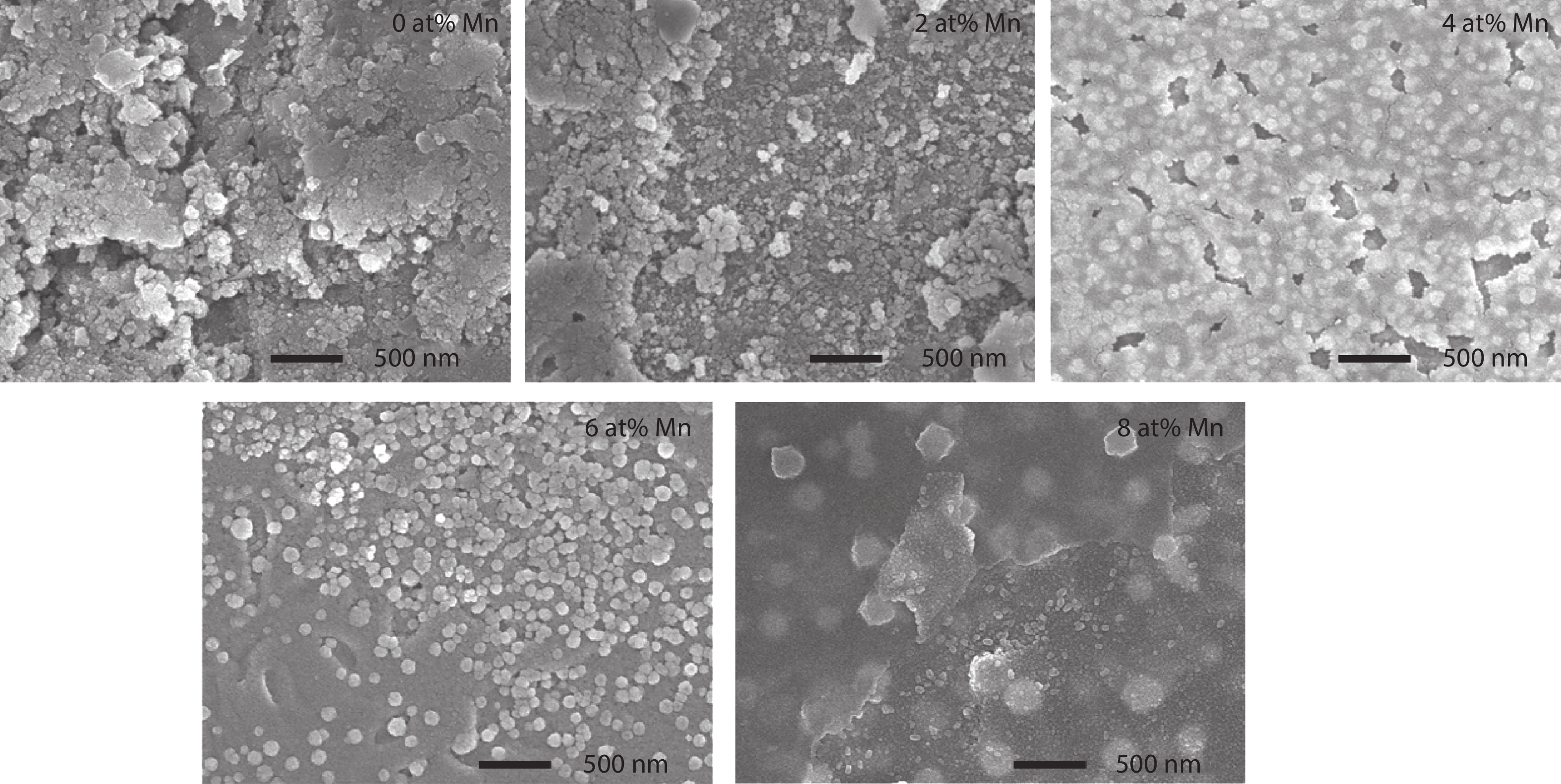
 DownLoad:
DownLoad:


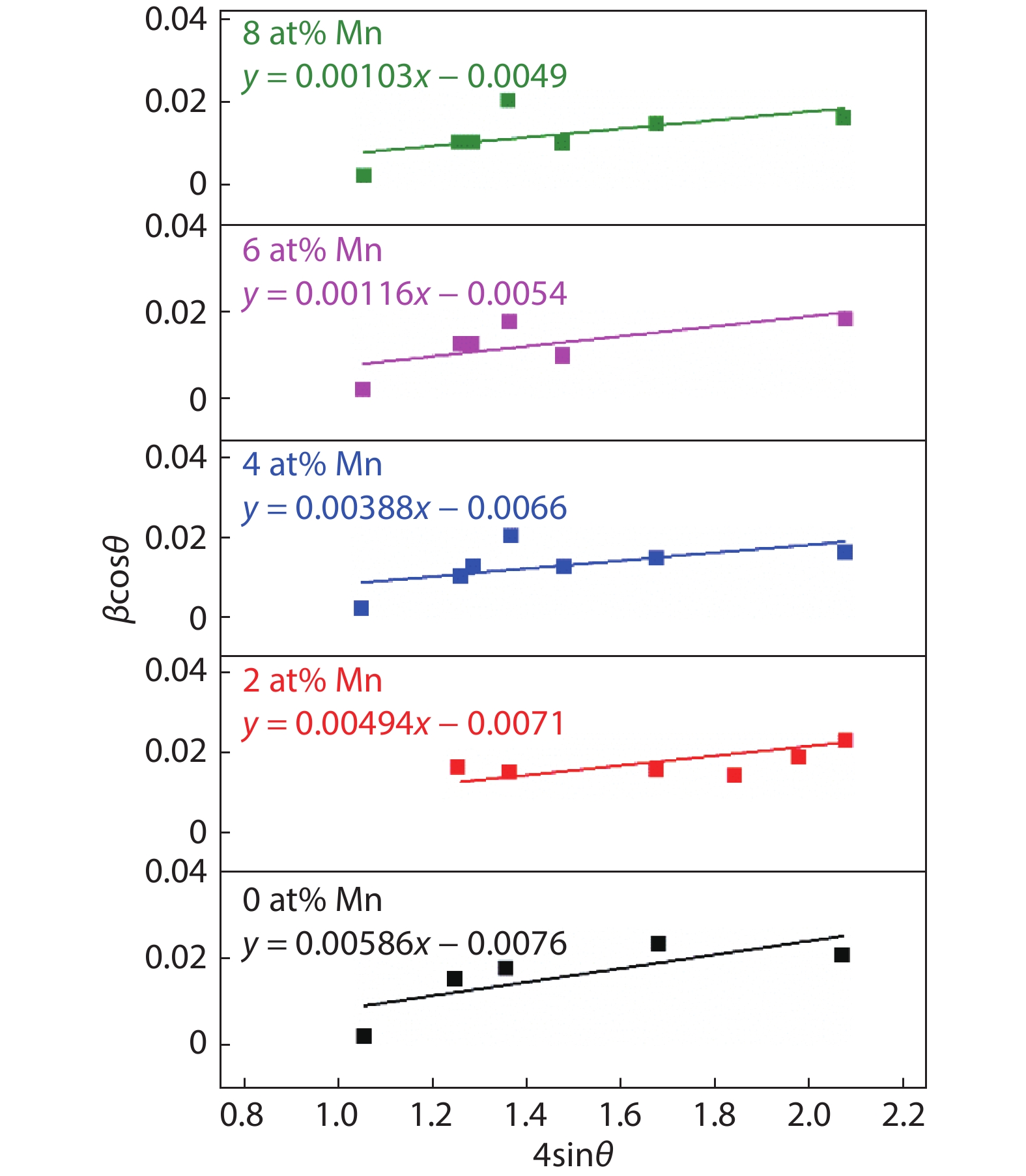
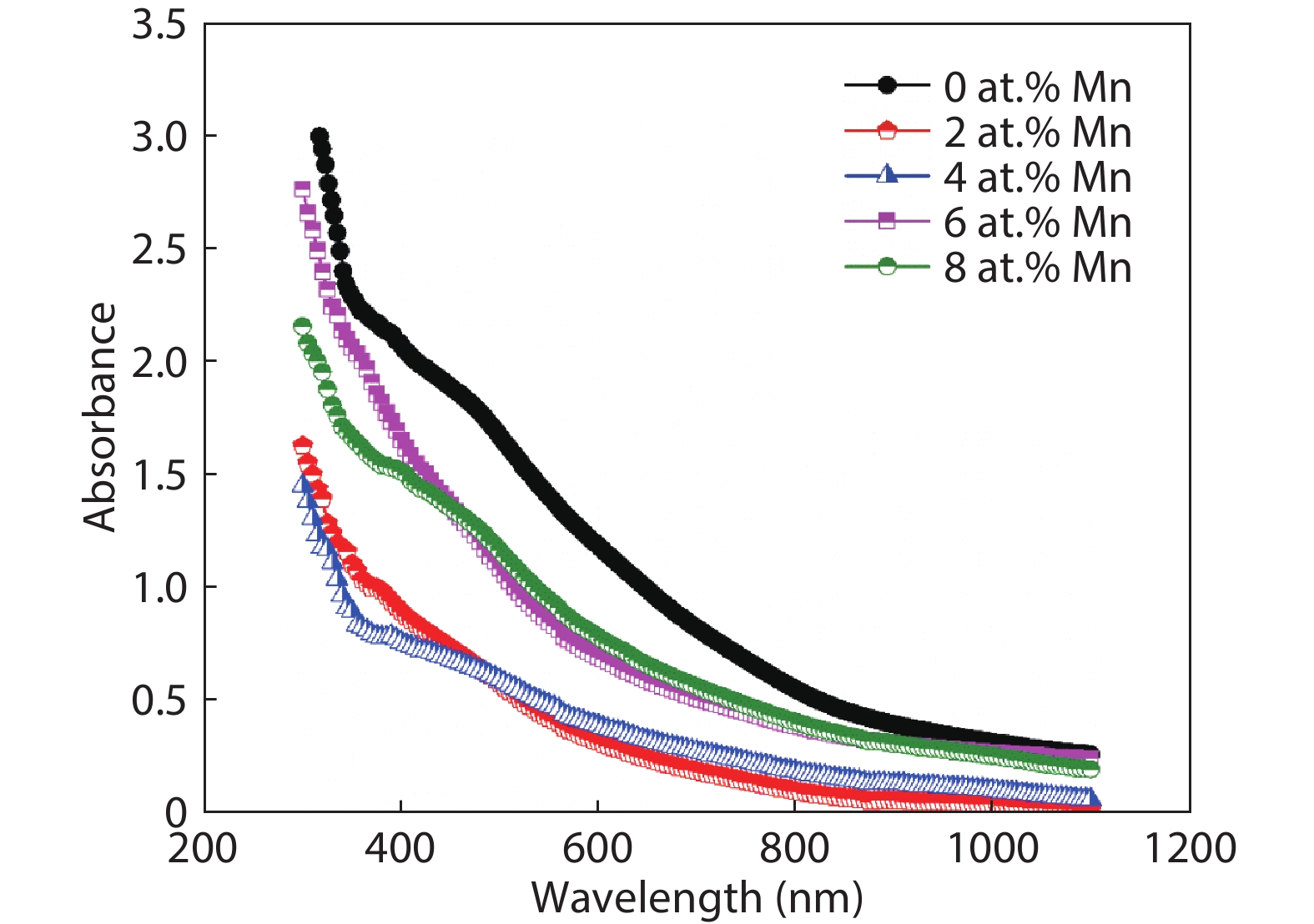



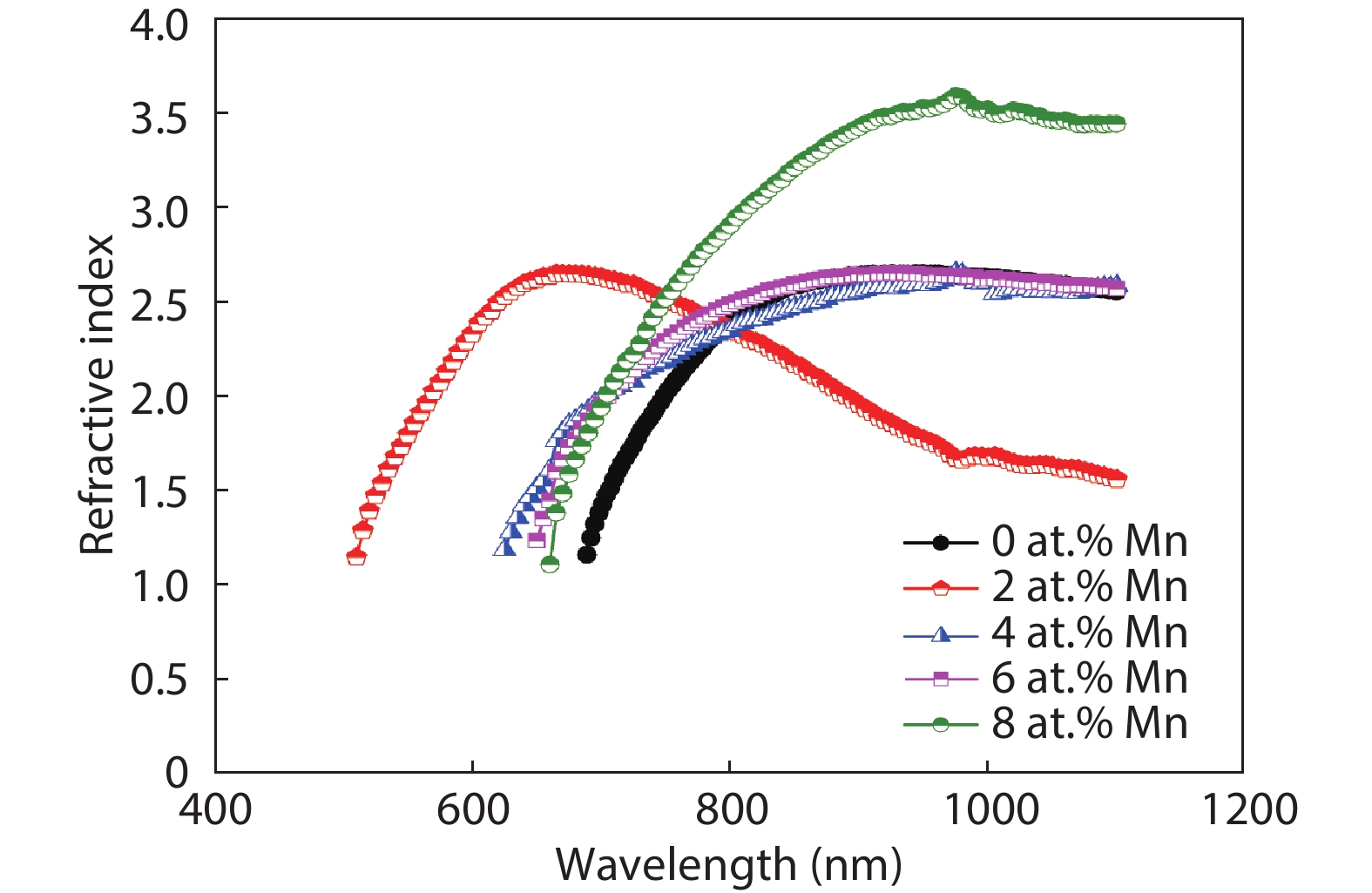
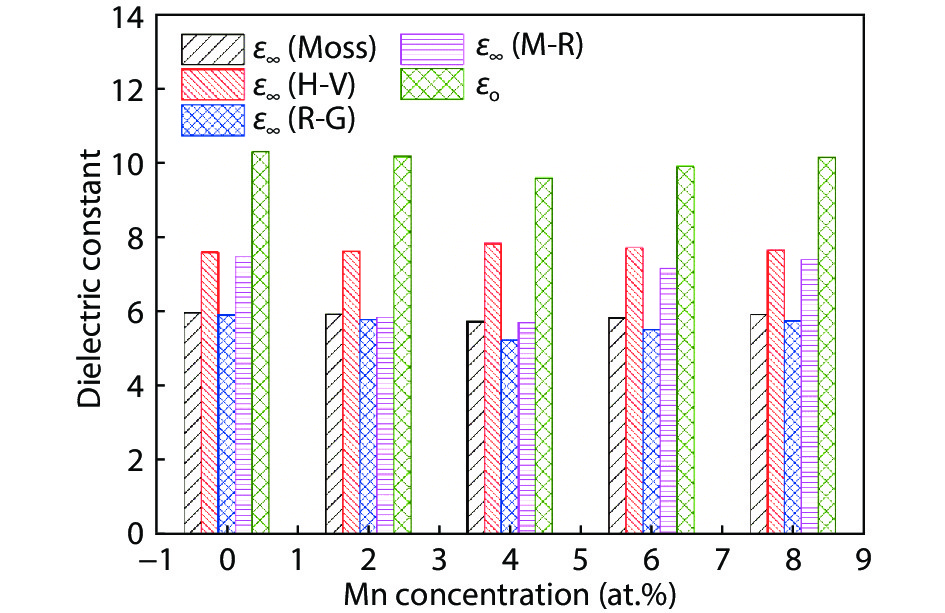
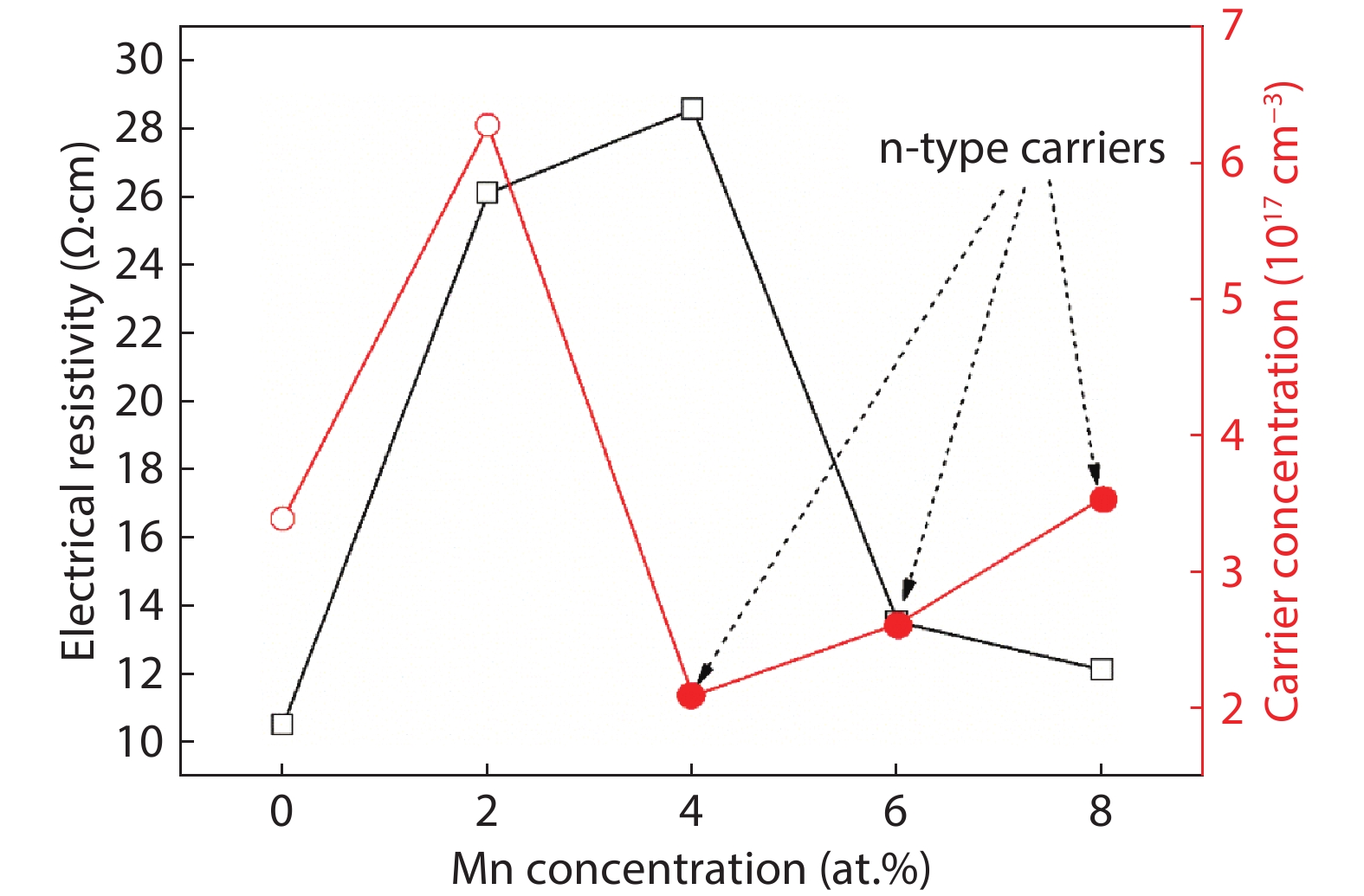
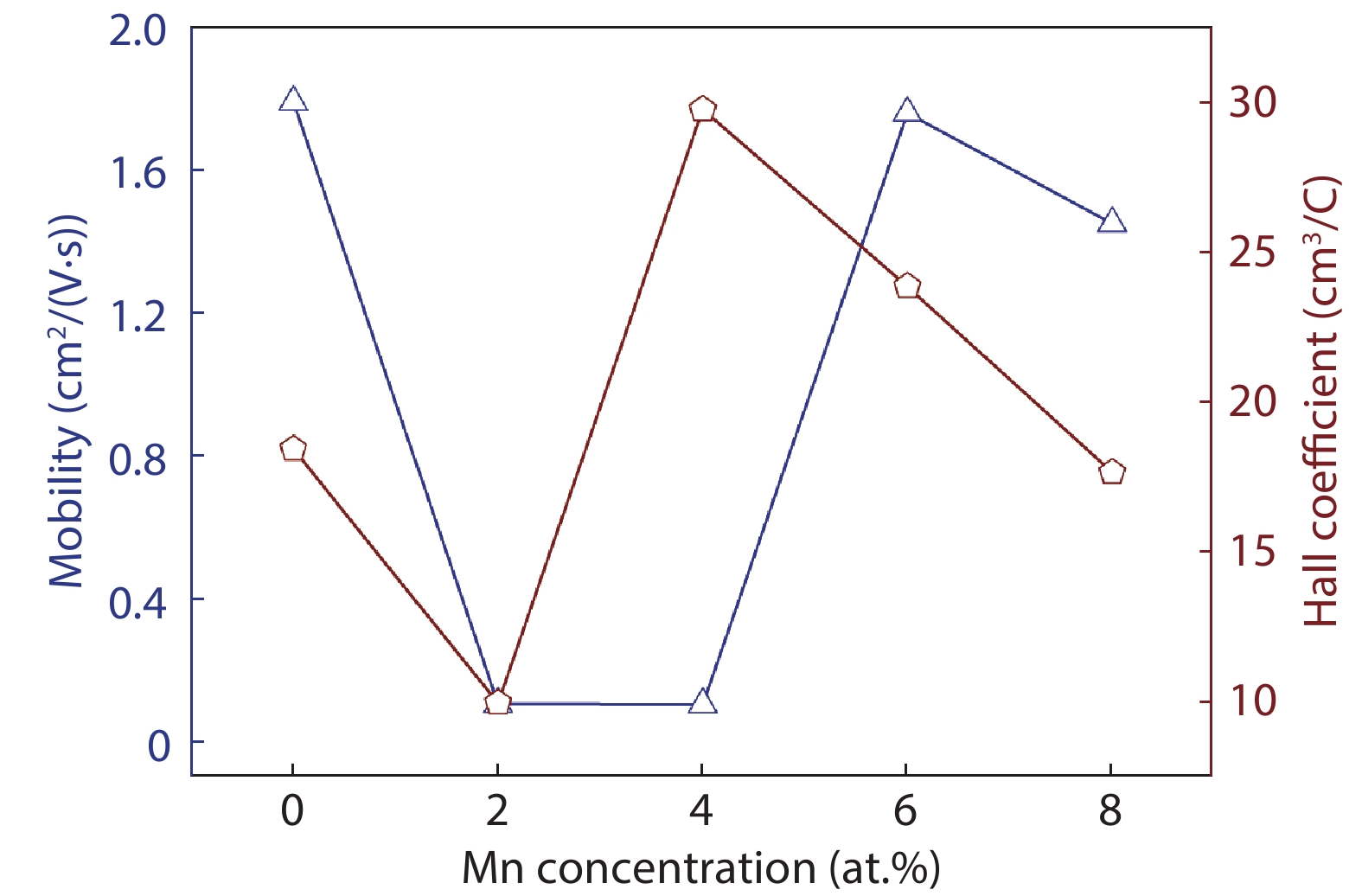












 DownLoad:
DownLoad:






































